TaylorMade has announced the latest additions to its players iron line-up with the P790 and P730 book-ending the current P750 and P770 models.
The naming of the P700 series iron line up comes from the length of the blade, so with these irons TaylorMade has added both a players iron packed with technology in the P790 together with a classic, shorter headed Tour players blade in the shape of the P730.
I caught up with Tomo Bystedt, Senior Director of Global Irons to talk through the design, construction and new technology behind the latest TaylorMade irons.
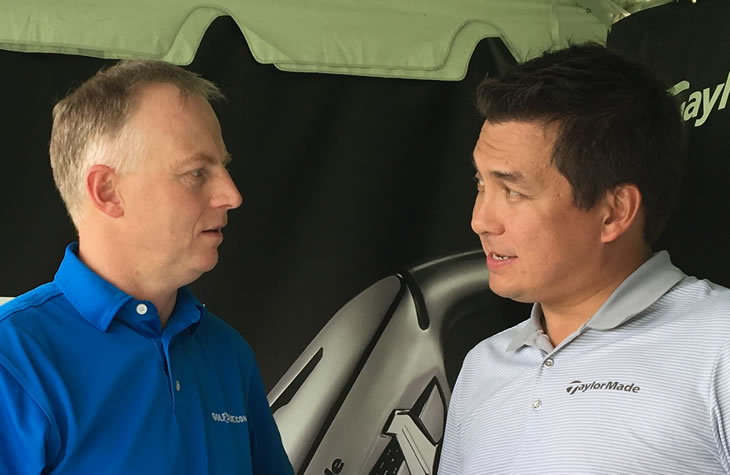
TaylorMade P790 Irons
Hi Tomo. The P790 is promoted as a players iron packed with technology to improve playability. What was your thinking behind it?
The P790 is an iron that we had talked about a few years ago just before the PSi came out, in that we wanted to make an iron that was a fully forged set, where the feel of the iron was as good as any players irons out there, but that still had the performance and distance of a game improvement type product.
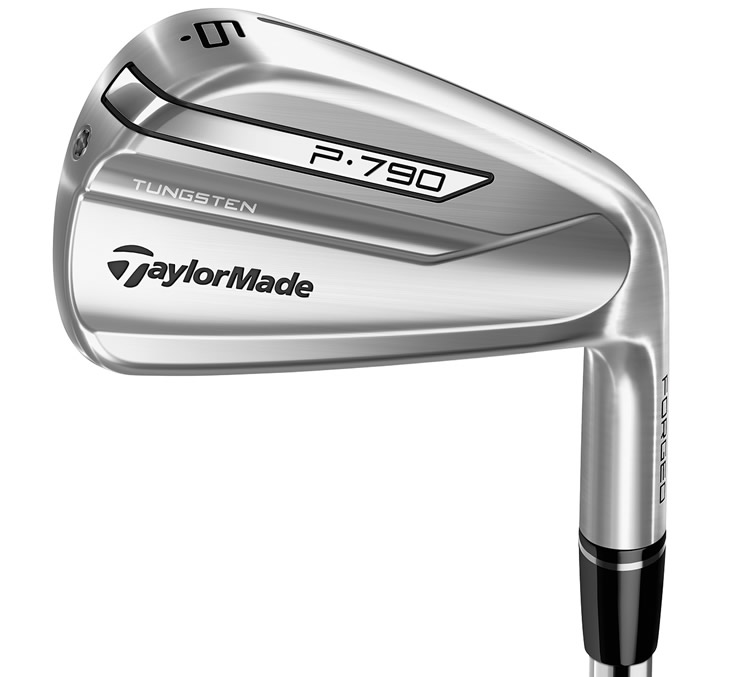
So we started thinking about how we would use forged construction, different carbon steels and obviously with a hollow construction we had to make sure we got great sound and feel. There were a lot of things in the design that were new to us in terms of construction, the materials, but the first focal point is around distance.
We spent a lot of time to make sure we have got the P790 irons as close as possible to the COR limit for speed, which was our primary goal in terms of delivering more performance. In the past with PSi and the RSi 2 we’ve had to compromise a little bit with speed to get the kind of feel that we wanted but the P790 are actually significantly faster than those products.
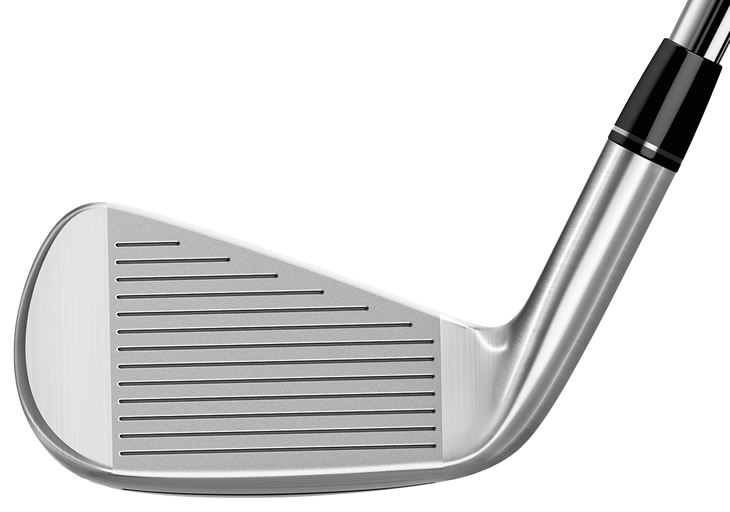
In terms of look and feel we started from a blank sheet of paper in terms of the design and the shaping of the product. The irons have a medium-to-low offset with a medium level top-line, not too thin and not too thick, so they sit firmly in the players irons category looks wise. Likewise with the blade length, it is on the longer side of the P family of irons, in fact the nomenclature of the P790 indicates that is a 79 mm blade, so it is just a fraction longer than the P770.
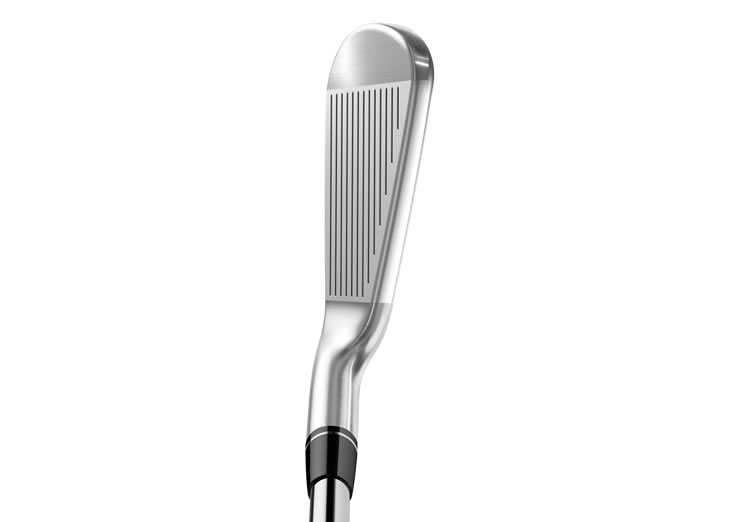
Finally the forgiveness and playability aspects of the P790 was important. With the hollow construction we are able to make it very perimeter weighted for high MOI and also make it very low CG. We have used internal tungsten weighting to push the CG down as well as increase MOI in the clubs to ensure they are very forgiving and very playable golf clubs.
What is the screw in the toe of the irons for?
That is the injection port for the speed foam material and this is one of the real keys for unlocking performance in these irons. We wanted to use a filler in the cavity because in our testing when we use different materials, whether it is an elastomer or a polyurethane type product in the cavity we definitely see an improvement in the feel of the product. It feels more solid, softer and less loud so we wanted to go down that road.
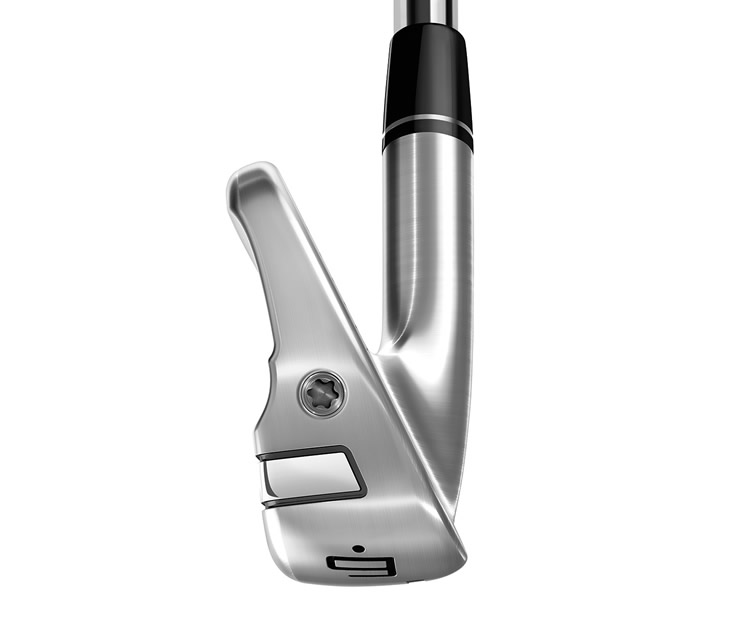
If you look at the other products in the market right now, our UDI driving iron that we have out on Tour, or Callaway’s Epic irons for example, they are not filled with anything because they want to keep all the speed, but that means you have to sacrifice a little bit on the feel side of things.
On the other side you have irons like we have launched in the past like our R9 iron that had a foam inside, PXG irons have an elastomer inside their irons, and these are great from the feel side of things, they definitely improve the feel of the product, but unfortunately they also really hurt your COR and reduces the ball speed.
We spent a lot of time with our golf ball engineers to research materials to find something we could put in the cavity that would not impact the COR but at the same time would help with delivering good feel and high COR. We finally found a material that we are calling SpeedFoam, and we are going to keep calling it that to make it more difficult for people to figure out exactly what we are using.
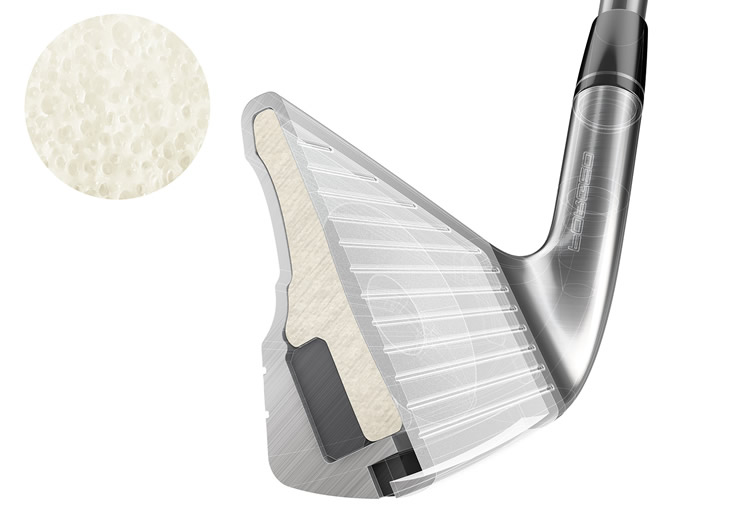
It starts at specific density and it is injected through the hole in the toe that you saw and then it expands to about 4 or 5 times its original size and becomes a rigid foam once it is inside the club.
It is very light, the whole piece only weights about 4g in the club. It really is a big breakthrough for us as it means we are able to go thinner on the face as a result of the foam supporting the face from a durability standpoint at impact but at the same time it doesn’t impede the COR. It’s a brand new process, we had to buy new machines for our factories to be able to industrialise the process and make these products.
Does this work by the material simply supporting the face or does it flex at all?
It is very flexible. It is extremely soft. It is much softer than for example and EVA sole on a running shoe or the Boost foam in an Adidas shoe, it is much softer than those materials.
How is the head constructed?
In terms of construction and how it comes together, the face is a forged 4140 carbon steel plate with the thin face thickness and an inverted cone in the back. That gets welded to an 8620 carbon steel body and then internally we have a tungsten weight in the 3 through the 7 iron and then there is the screw in the toe that covers the port that we use for injecting the foam.
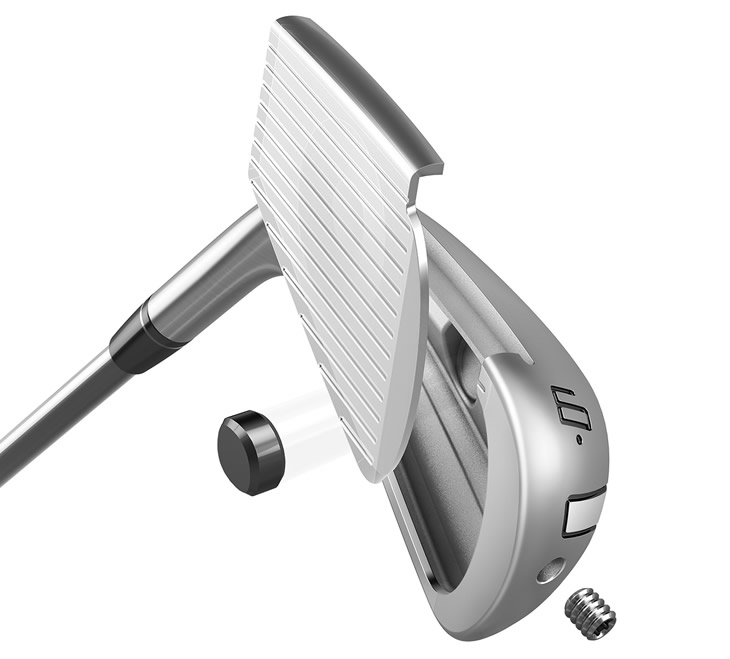
The speed pocket on this iron is a cut through so the face wraps onto the sole but it only gets welded on the face side so the sole is completely free to flex and we have filled the speed pocket with the same material, the TE040 material that we used for the speed pocket in the M family of irons.
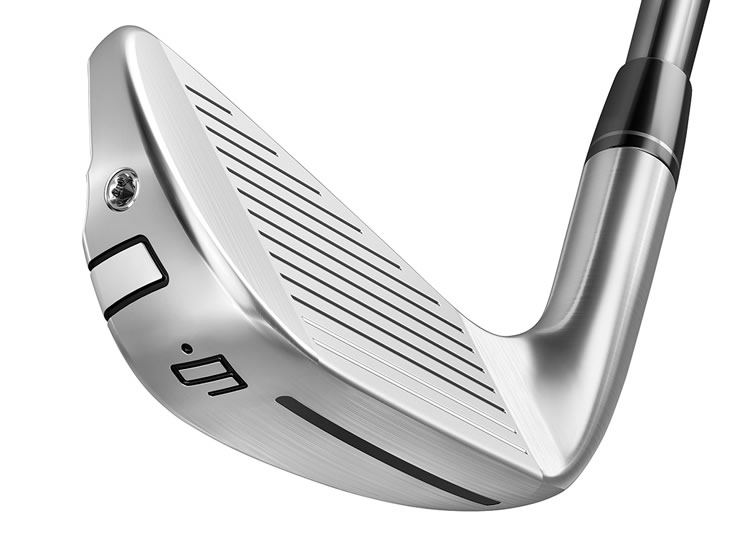
So if you look at the construction we haven’t really used 4140 carbon steel as a face forging before so that is new for us, we are also using the foam for the first time, and also a hollow iron with 8620 carbon steel casting is not something we have done either.
There is a lot of new stuff here that is focused on getting the speed where we need it so that face material is a fairly hard strong carbon steel material and then focusing on making the rest of the body soft to provide good feel.
What shafts are you offering with it?
We are offering some new shafts that we haven’t had before on any other products. True Temper has a new Dynamic Gold shaft which is a lighter weight 105g version of their Dynamic Gold and then UST also has a new Recoil shaft that we are co-launching with them for this product. Both of these give some really nice improvements in terms of the performance we have seen in the crossover category of shafts. Not too lightweight, not too heavy, offering good stability with good performance.
TaylorMade P730 Irons
As well as the P790 you have also launched the P730 iron. Can you tell us about that?
Yes you will have seen this in prototype format on Tour. We have had it with Rory since The Players, as we were signing him it gave us a good opportunity to get these out on Tour, and tested by him. He had a one-off set that we made in Carlsbad just before The Masters and we used that test as a test set. So we tweaked a few things and then we made the prototypes for Justin Rose as well which he received just before the Irish Open where he played very well with them and he has been playing them since.
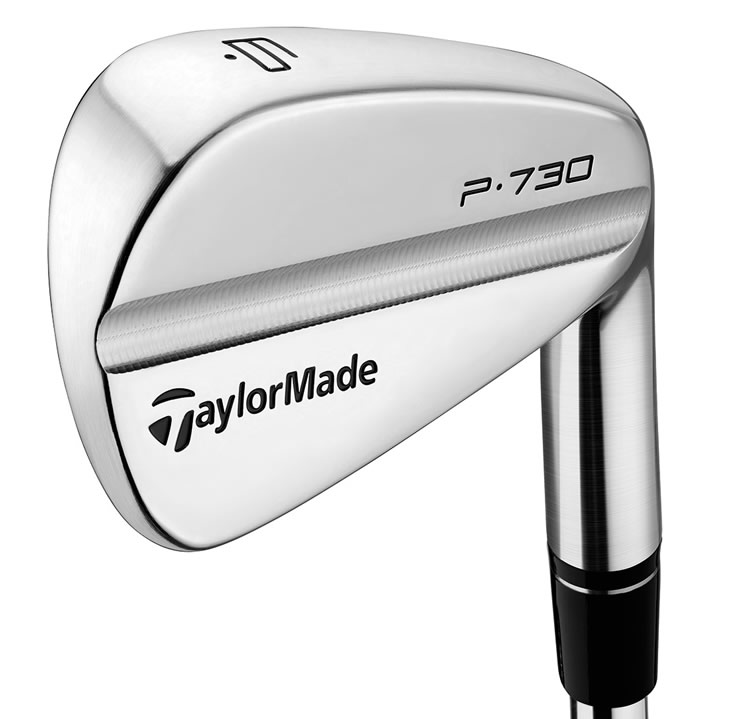
From there we were closer to the production set up and DJ got his last week at Firestone and they are the really the first of the production spec. Those sets are all subtly different but they are all very similar looking, we just had a few things we were cleaning up and changing as we were finalising the products and obviously as the season wears on I think Rory is going to get into a regular production set of the irons.
Why do these Tour players go for a straight blade as opposed to the other P700 clubs with a bit more technology in them?
That’s a good question. We definitely see a performance advantage for certain players with a blade. These have the shortest blade length of the P irons and the shortest blade length has the lowest inertia. You may think that the lowest inertia would be less forgiving and therefore not as good, but one of the important factors these players look for is first of all the workability of the iron, the ability to shape shots more easily, and a lower inertia iron is easier to manoeuvre, easier to hit shots with less input, to get a slight curvature on the shot.
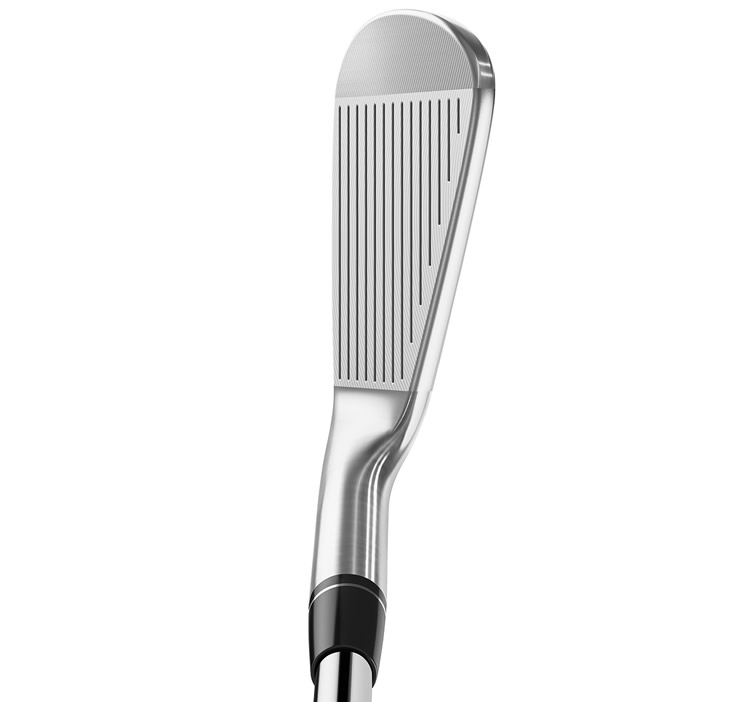
Some players don’t hit a lot of shaped shots whereas some players hit them all the time and really with DJ, Rory and Justin they tend to hit a straight ball with slight curvature either way and the blade allows them to do that more effectively than with any of the other clubs.
The other reason is the shorter blade is a little bit better out of the rough, it has less drag through the long grass. So those are a couple of reasons they play the blade.
Obviously it is the least forgiving iron in comparison to the P750 and P770 but the P730 does have a channel down the back that puts a little bit more mass up into the top of the club head which helps with strikes that are slightly high or slightly low on the face. It is a very small improvement, but it is enough for this calibre of player to be able to tell the difference whereas normal golfers wouldn’t be able to feel that.

It has definitely shown up in the data with Rory testing, his distances were very consistent and he was commenting that half groove high or half groove low contact is feeling very solid the distance is a lot more consistent compared to his dead centre shots. For the top players in the world, with their ball striking as good as it is, a blade is a better tool for them.
What are the differences between these blades and your old Tour Preferred MB blades?
The blade length is a little bit shorter than the MB, about 1mm shorter, and that is again following feedback from our Tour players and we have also improved the shaping versus the older model. We have focused a lot on the 7-8-9 iron transition and making that look as good as possible.
Typically the 8 iron is a very difficult club to get it to look right, a lot of Tour players in particular are sensitive to how their 8 iron looks. We have had a lot of feedback and conversations with Justin and Dustin in terms of what they like to see and that has fed into how we have worked on the shaping transition.
From a shaping standpoint I think this is the nicest looking set we have done in terms of the view at address and how the offsets blend with all the leading edges being very symmetrical, so we are really proud of this one.

In terms of the way you forge the irons, is there anything particular in the way you do that compared to the forging processes of other manufacturers?
We use different forging processes for each different set of irons, so for example the P750 irons have a lot of very intricate geometry on the head so we use a 2000 ton press which is unique in the industry and allows us to create a lot of that back cavity geometry very accurately.
On the P730 we use a five step net forging process with 1025 carbon steel in order to get a very high level of consistency and then we just mill out that channel in the centre that allows us to control the weight very accurately in head so the tolerances are very accurate.
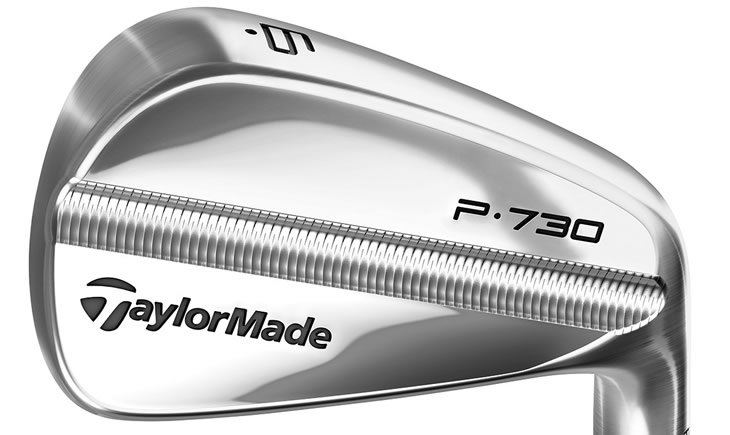
So with the P790 you forged the two separate parts of the head, the face and the body and put them together?
On the P790 it is the face that is forged and the body is actually a cast carbon steel, the same soft carbon steel material that we use in our wedges. We then have a different tungsten weight in each head and to do that we use a metal injection moulding to create the weight and then we weld it into the head before we put the face on.
So the back of the iron gets made, then the tungsten weight gets put on before we weld the face on and then the final step is to inject the foam before the club goes through the finishing stages like polishing.
When can we expect to see them in store?
The P790 should be in stores in the USA from 15 September 2017 and the rest of the world from 16 October at a price of £1049/$1299 for steel shafts. The P730 will be available globally from 15 November for £1049/$1399 in steel shafts.
Thank you Tomo.
More from TaylorMade